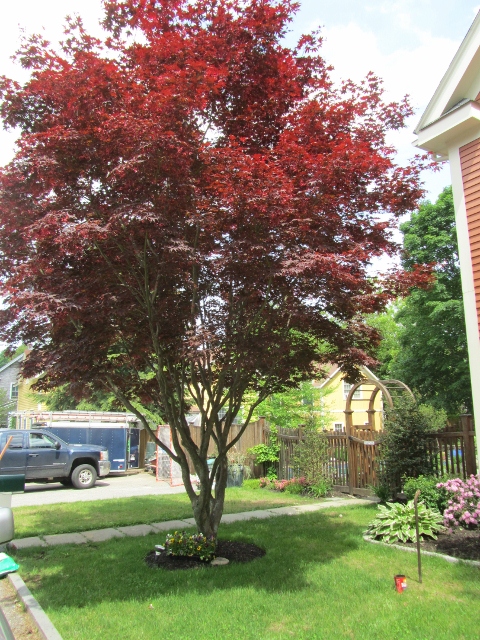
Fertilize Your Own Trees And Shrubs!
As you can tell I’m a huge advocate of Do-It- Yourself! DIYers don’t just take on carpentry projects ~ they do everything…. even fertilize trees and shrubs.
Trees that live in manicured landscape and in grass areas need fertilizer more then ones that do not compete with grass and are allowed to have their leaves naturally compost. It’s a good idea to periodically fertilize your trees and shrubs every two or three years, during the growing season, to improve the health and appearance of the trees. Evergreens should be fertilized every three or four years.
Experts recommend applying fertilizer between leaf drop in the fall and leafing out in the spring.
Two Fertilizing Methods:
Basically as a DIYer you have two ways to apply fertilizer:
- Directly to the soil
- Root application
Directly to soil:
The simplest and quickest way is to apply fertilizer directly to the soil.
Root application:
The second method is to applied the fertilizer below the soil surface via holes. Putting fertilizer below the soil surface is more difficult but gets phosphorus and potassium into the root zone where it is needed. I make my holes with a pointed metal pry bar. There are specialty tools you can buy, but a crowbar will work too.
Tree and shrubs feeder roots are usually within the top 10 to 14 inches of soil. Poking holes every 24″ around the drip edge of the tree, 10 to 14 inches deep and filling the holes with fertilizer will feed these roots.
Buying Fertilizer:
Fertilizer provides nitrogen, potassium and phosphorus. When buying fertilizer look for the three numbers that represent nitrogen, potassium and phosphorus. [example: 5 – 10- 5]
I always remember the jingle, “Up, Down, All Around,” to help me remember which numbers I need.
- The “Up” is the nitrogen
- The “Down” is the potassium, which is what I want for the roots
- The “All Around” is for the phosphorus. I always look for a high “Up” number.
To make this simple – buy your fertilizer at a reputable nursery and ask an expert.
Applying the Fertilizer:
I use my pry bar to make holes approximately 2 feet apart, at and at the drip line of the tree. I slant my holes slightly toward the tree. I then fill each hole with fertilizer.
Make holes approximately 2 feet apart, at and at the drip line of the tree. I slant my holes slightly toward the tree. I then fill each hole with fertilizer.
What is the drip edge? The tree’s drip edge is the outer top ends of the tree’s branches; the roots’ mirror the branches. If you draw an imaginary vertical drop from the outermost top edge of the tree branches and leaves this is where you will poke your fertilizer holes.
Trees and shrubs can receive 2 to 4 pounds of nitrogen per 1,000 square feet of root spread area. The root spread area occupies 1½ times the area of the crown spread (3.14 x radius²).
Experts recommend applying fertilizer between leaf drop in the fall and leafing out in the spring.
For a detailed explanation visit the Clemson University’s Cooperative Extension
